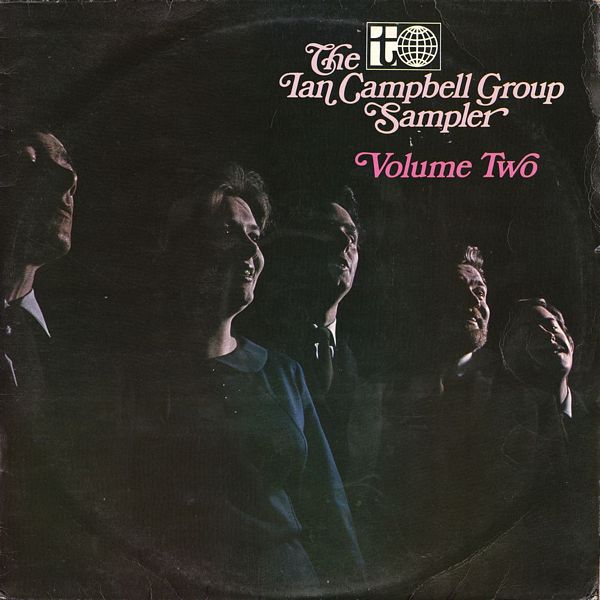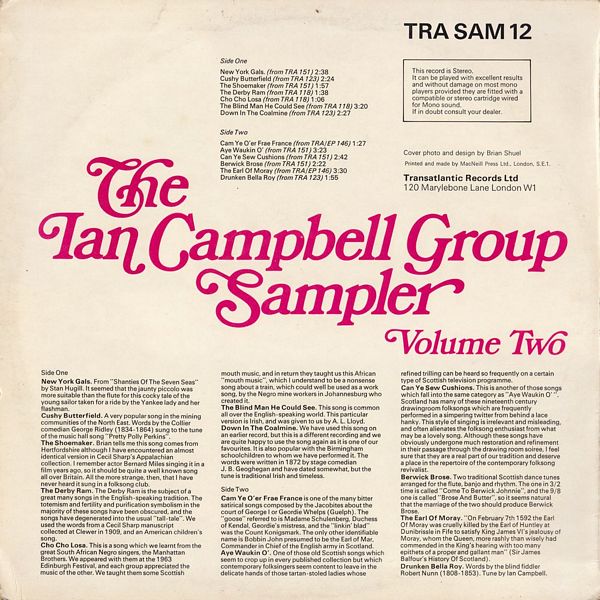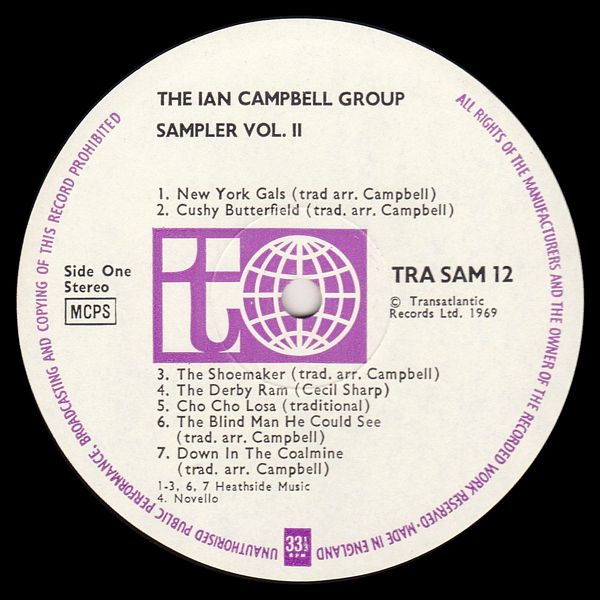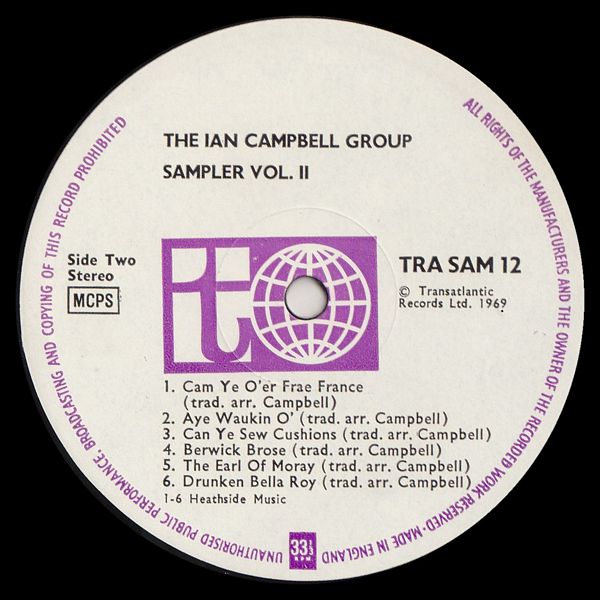

 |


 |
Sleeve Notes
New York Gals: From "Shanties Of The Seven Seas" by Stan Hugill. It seemed that the jaunty piccolo was more suitable than the flute for this cocky tale of the young sailor taken for a ride by the Yankee lady and her flashman.
Cushy Butterfield: A very popular song in the mining communities of the North East. Words by the Collier comedian George Ridley (1834-1864) sung to the tune of the music hall song "Pretty Polly Perkins".
The Shoemaker: Brian tells me this song comes from Hertfordshire although I have encountered an almost identical version in Cecil Sharp's Appalachian collection. I remember actor Bernard Miles singing it in a film years ago, so it should be quite a well known song all over Britain. All the more strange, then, that I have never heard it sung in a folksong club.
The Derby Ram: The Derby Ram is the subject of a great many songs in the English-speaking tradition. The totemism and fertility and purification symbolism in the majority of these songs have been obscured, and the songs have degenerated into the usual "tall-tale". We used the words from a Cecil Sharp manuscript collected at Clewer in 1909, and an American children's song.
Cho Cho Losa: This a song which we learnt from the great South African Negro singers, the Manhattan Brothers. We appeared with them at the 1963 Edinburgh Festival, and each group appreciated the music of the other. We taught them some Scottish mouth music, and in return they taught us this African "mouth music", which I understand to be a nonsense song about a train, which could well be used as a work song, by the Negro mine workers in Johannesburg who created it.
The Blind Man He Could See: This song is common all over the English-speaking world. This particular version is Irish, and was given to us by A. L. Lloyd.
Down In The Coalmine: We have used this song on an earlier record, but this a different recording and we are quite happy to use the song again as it is one of our favourites. It is also popular with the Birmingham schoolchildren to whom we have performed it. The words were written in 1872 by stage comedian J. B. Geoghegan and have dated somewhat, but the tune is traditional Irish and timeless.
Cam Ye O'er Frae France is one of the many bitter satirical songs composed by the Jacobites about the court of George I or Geordie Whelps (Guelph). The "goose" referred to is Madame Schulenberg, Duchess of Kendal, Geordie's mistress, and the "linkin' blad" was the Count Konigsmark. The only other identifiable name is Bobbin John presumed to be the Earl of Mar, Commander in Chief of the English army in Scotland.
Aye Waukin O': One of those old Scottish songs which seem to crop up in every published collection but which contemporary folksingers seem content to leave in the delicate hands of those tartan-stoled ladies whose refined trilling can be heard so frequently on a certain type of Scottish television programme.
Can Ye Sew Cushions: This another of those songs which fall into the same category as "Aye Waukin O'". Scotland has many of these nineteenth century drawingroom folksongs which are frequently performed in a simpering twitter from behind a lace hanky. This style of singing is irrelevant and misleading, and often alienates the folksong enthusiast from what may be a lovely song. Although these songs have obviously undergone much restoration and refinement in their passage through the drawing room soiree, I feel sure that they are a real part of our tradition and deserve a place in the repertoire of the contemporary folksong revivalist.
Berwick Brose: Two traditional Scottish dance tunes arranged for the flute, banjo and rhythm. The one in 3/2 time is called "Come To Berwick Johnnie", and the 9/8 one is called "Brose And Butter", so it seems natural that the marriage of the two should produce Berwick Brose.
The Earl Of Moray: "On February 7th 1592 the Earl Of Moray was cruelly killed by the Earl of Huntley at Dunibrissle in Fife to satisfy King James Vl's jealousy of Moray, whom the Queen, more rashly than wisely had commended in the King's hearing with too many epithets of a proper and gallant man" (Sir James Balfour's History Of Scotland).
Drunken Bella Roy: Words by the blind fiddler Robert Nunn (1808-1853). Tune by Ian Campbell.